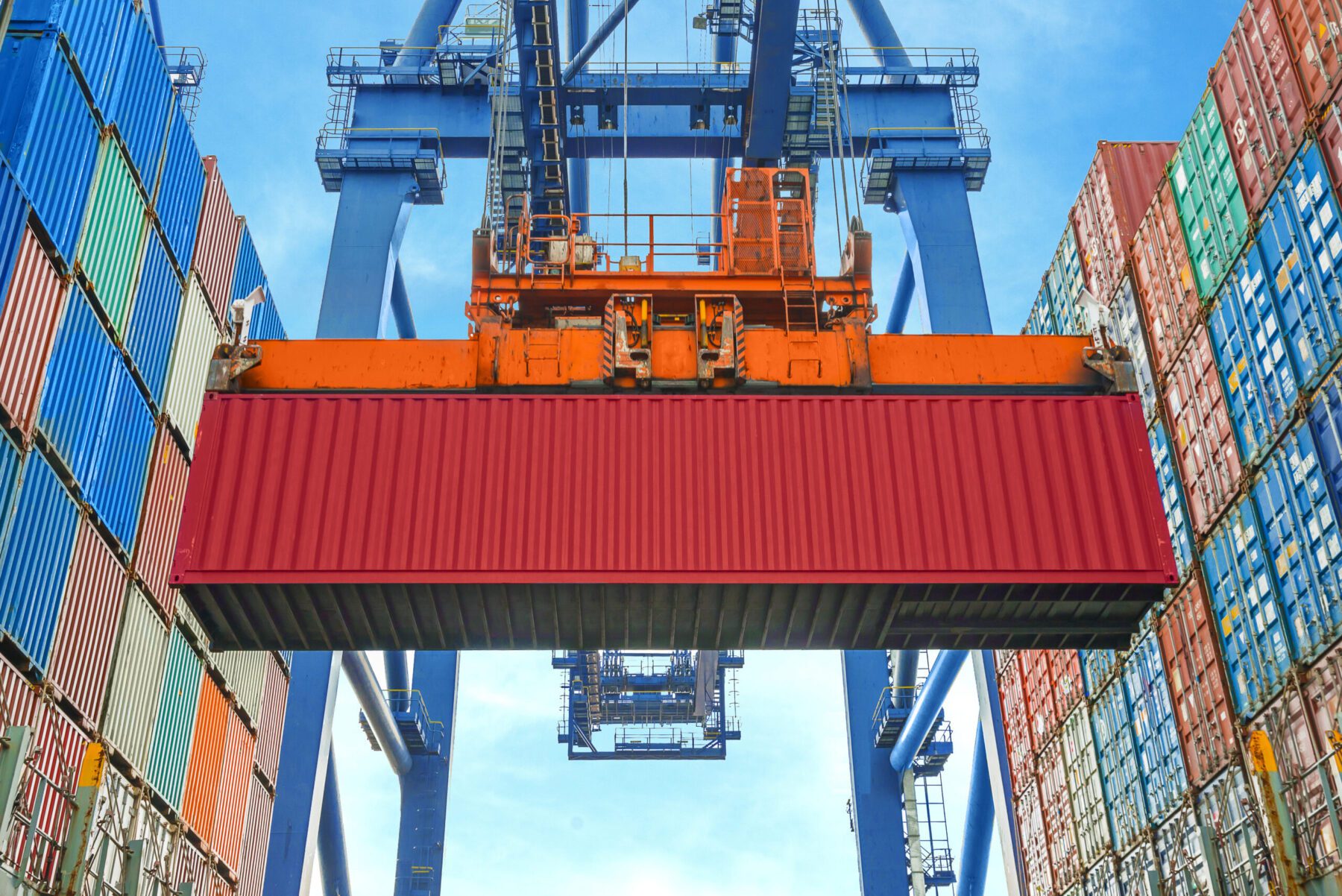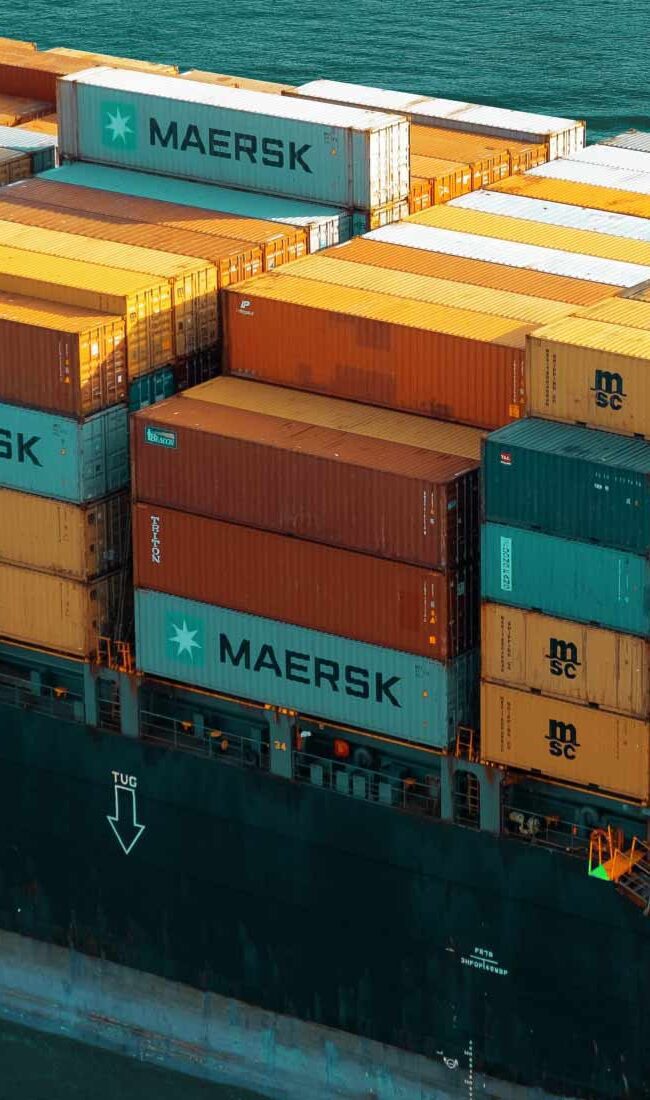Training in Le Havre and throughout France
CTU code "Container loading and stuffing
Our training course meets the requirements of ship safety regulations applicable in French ports. This stipulates that cargo loading in containers must be carried out in accordance with the IMO/ILO/UNECE Code of Good Practice (CTU Code ) since January 6, 2017 (Article 431 of the RSN) .
The CTU code provides answers to the essential questions of cargo loading and transportation safety for container stuffing (planning, rules for loading and securing loads, including dangerous goods) and deals with the recommendations to be taken into account for handling, checking equipment before and after loading/unloadingt as well as advice on protecting goods transported.


Duration
2 days


Type of training
Presential in Le Havre and throughout France (remote option available according to your needs)


Price
900 € / person (inter-company package)


Public
Loaders, unloaders, handlers, stowaways in transport equipment (CTU); loaders; shippers; carriers; handlers; logisticians; controllers


Prerequisites
No prerequisites are required.


Result indicator
In 2022, the success rate was 90.47% and the satisfaction rate 83.86%.X% success rate in 2023






CTU Code training - Container loading and stuffing
Pedagogical objectives
-
Know the consequences of improper loading/securing
-
Know the legal bases and application framework of the CT code
-
Determine the physical forces generated by each mode of transport
-
Define a loading plan in compliance with the CTU code
-
Implement an efficient and compliant inspection process for transport equipment and cargo prior to loading.
-
Learn about the IMDG Code and the rules for handling and loading dangerous goods
-
Implement best practices to prevent cargo damage during handling and transportation
-
Knowledge of the CSC convention and ISO standards governing the transport and inspection of sea containers
-
Know the different types of lashing and define the most appropriate solution for each context.
-
Carry out simple tie-downs according to the rules of the trade
1. Typical training program
- Introduction of participants and trainer.
- Definition of training objectives.
- Explanation of how trainees are assessed during and at the end of training.
2. The CTU code and its application
- Creation and regulatory framework.
- Knowledge of chains of responsibility.
- CTU code training.
3. Transport conditions
- Forces acting during transport (road, sea, rail).
- Mechanical and climatic risks.
- Consequences of improper loading (physical, environmental and economic damage).
4. Types of transport equipment
- Different types of transport equipment.
- The maritime container (ISO standard and CSC convention).
- Resistance of container walls (ISO) for blocking loads.
- Lashing point resistance in a container.
- CSC plates and inspections.
5. Choice and approval of transport equipment
- Verification (internal/external) of transport equipment prior to loading.
- Determine structural damage (container) prior to loading.
6. Lashing points
- Lashing points (minimum number and load limit) in accordance with EN 12640.
- Strength of lashing points (semi-trailers, sea containers).
7. Loading principles and weight distribution
- Loading/packing plan.
- Correct weight distribution (center of gravity position).
- Heavy / concerted loads (examples) and precautions to take into account.
- Loading different types of cargo together (principles and precautions).
- Loading dangerous goods.
- Handling symbols and packaging markings (ISO 780).
- Handling safety.
- Risk of condensation in transport equipment.
- Identify contamination risks.
- Assess load conformity.
8. Securing and lashing loads
- Strong (definitions and materials studies).
- Different types of lashing.
- Safety tie-down.
- Direct docking.
- Top tie-down.
- Combined tie-down.
- Load stability.
- Lashing devices and their strengths (straps, bars, nets, wedging cushions).
- European standards on lashings and lashing devices (straps).
- Wood dunnage and information on the use of nailed wood.
- Assess load securing compliance.
- Case studies and analysis of your tie-downs during training.
9. Actions at the end of loading
- Closing the transport unit.
- Marking and placarding.
- Checking the gross weight.
10. Unloading transport equipment
- Reception of transport equipment (precautions and risks for operators: falling objects, improper securing, hazardous atmospheres, etc.).
11. Fumigation
- Definitions and risks (including containers that have been ventilated and reused after fumigation).
- Marking and placarding


Teaching methods
- Visuals and presentations
- Technical datasheets
- Exercises,
- Alternating applications, feedback and presentations
Note :
For in-company training, the beneficiary company (if applicable and depending on requirements) is asked to provide one or more means of transport and standard loads. It is always possible to work on photographic material specific to the company in order to apply the knowledge acquired by the trainees to concrete examples.
The strengths of this course
-
The training is delivered by an expert in the field. It includes numerous case studies and concrete examples.
-
Simple, effective methods for inspecting the loading/securing of loads in your structure will be provided, so that you can improve or set up an internal control process (Excel supports, weight distribution, securing calculations, audit templates and/or checklists for load planning, pre-loading inspection sheets, post-loading inspection sheets, etc.).
-
Protect your interests and increase your expertise in stuffing maritime containers by complying with section 431.7 of the 2017 RSN.
-
CTU Code training meets the training requirements set out in Chapter 1.3.12 of the IMDG Code for shore-based personnel involved in loading/unloading dangerous goods.
CTM Survey is registered as a training organization under the following number: 28760576776.

